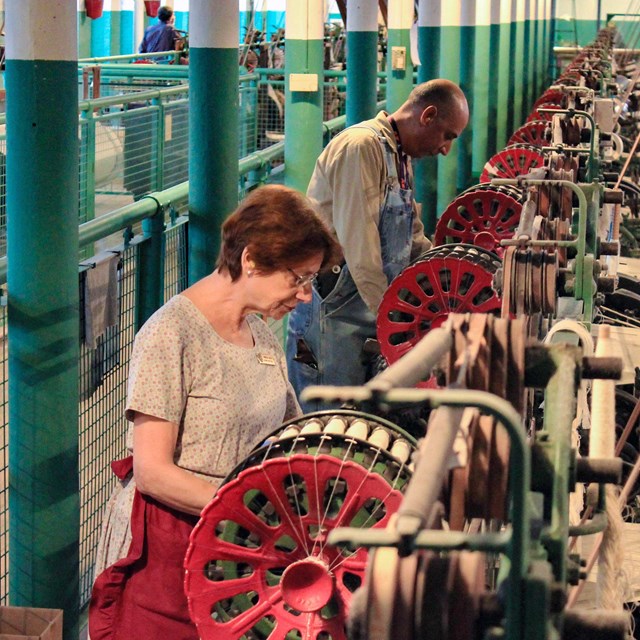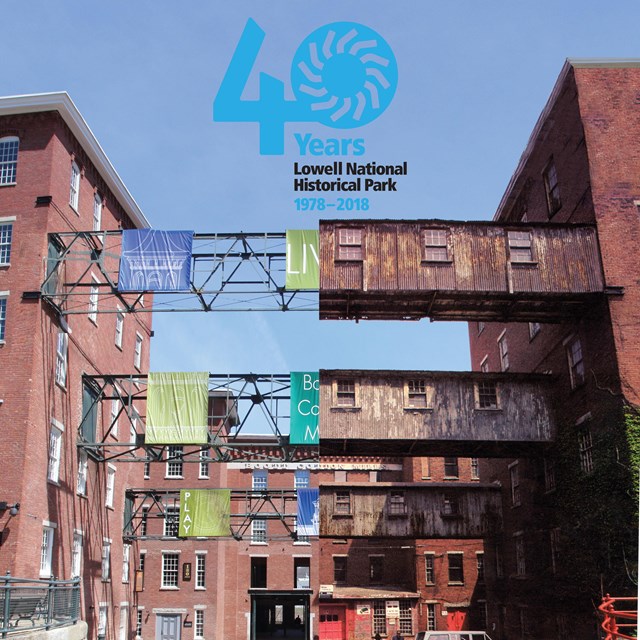

Left image
Right image
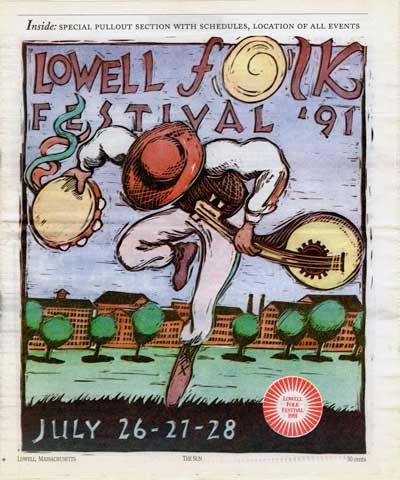
Lowell Sun Until 1995, the Lowell Historic Preservation Commission helped to identify, sponsor, and find funding for cultural expression. Part of the success in this area comes from embracing the city’s various cultures and partnering with many local organizations. The Lowell Folk Festival is a good example. It is one of the most visible and impressive symbols of the city’s revival, and has become a premier cultural event attracting visitors and participants from far beyond Lowell. The festival is rooted in local terrain and culture, having its origins in the Lowell Regatta Festival Committee that predated the park. Lowell hosted the National Folk Festival for three years, after which it continued the event as the Lowell Folk Festival, now in its 32nd year. The park plays a major role in producing the festival each year with many partners including the City of Lowell, Lowell Festival Foundation, Greater Merrimack Valley Convention & Visitors Bureau, the National Council for the Traditional Arts, and Greater Lowell Chamber of Commerce. The park may be part of a national system, but it is a homegrown, living entity, overlapping with and integrated into the City of Lowell. George Price’s UmbrellaThe Lowell Folk Festival begins with a parade from City Hall Plaza to Boarding House Park, initiating three days of music, food, performances, art, crafts, and other cultural activities. The park superintendent customarily leads the parade holding a red, white, and blue umbrella. Deputy Superintendent George Price started this tradition in 1987.
Visit our keyboard shortcuts docs for details
Take a trip into Lowell National Historical Park's archives with Ranger Moriah as she tells you the history of the Folk Festival Umbrella. Find out how a southern tradition became a parade staple here in the city of Lowell. 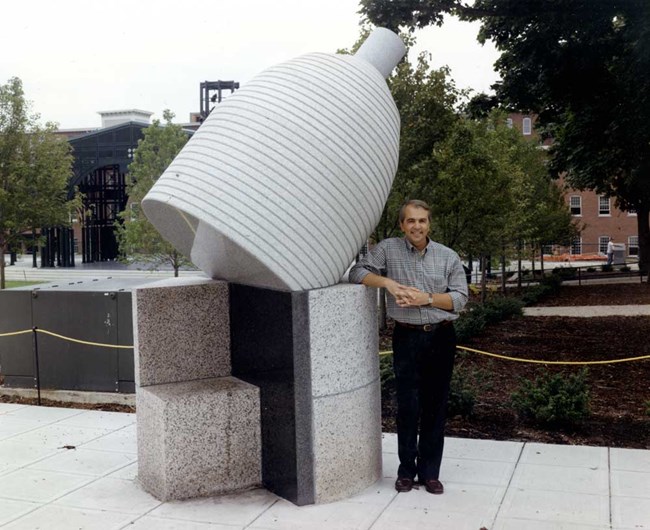
NPS Public ArtDowntown Lowell is home to over a dozen works of public art, including murals, fountains, and sculptures.Senator Paul Tsongas, one of the most enthusiastic and effective advocates for the park, was a strong supporter of public art, particularly sculpture. Most of Lowell’s public sculptures refer to the forces - human, mechanical, and natural - that forged the city. The artworks represented here honor Francis Cabot Lowell, whose ideas formed the basis for Lowell’s industrial system, and women, who formed the greater part of Lowell’s first labor force. Angkor Dance TroupeToday, Lowell continues to be a home to many newcomers, including immigrants, refugees, and their descendents. During the Khmer Rouge era (1975 – 1979), Cambodian refugees began to settle in Lowell, and in time the city became home to the world’s second-largest population of people of Cambodian ancestry outside of Cambodia. Lowell has become a center for efforts to preserve and revive traditional Cambodian arts, and the park partners with various Cambodian artists and organizations. The Angkor Dance Troupe is nationally recognized for practicing, teaching, and perpetuating traditional Cambodian performing arts. The widely admired Troupe, which has extensive ties to the local community, is based at the park’s Mogan Cultural Center. 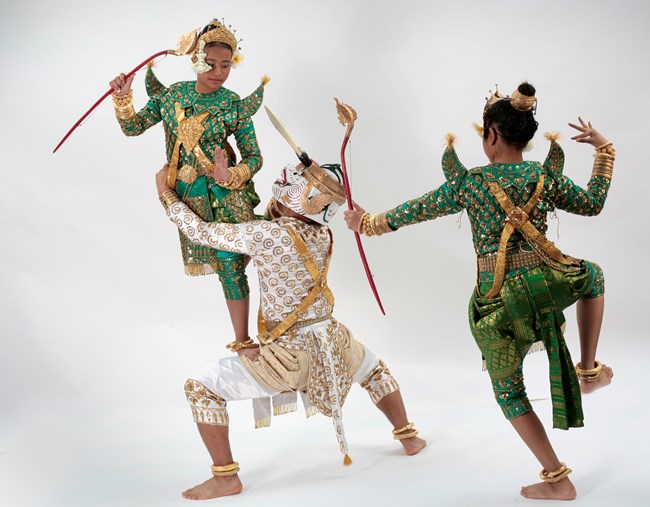
NPS / James Higgins Cambodian Classical DanceElegant and refined, classical dance combines highly stylized positions with gentle movements. Once reserved exclusively for Cambodia’s elite, Classical dance is now performed for audiences around the world and has become a central symbol of the beauty and spirituality of Cambodian Culture. Exhibited here is the Female Costume/Neang.The style of clothing worn during classical dance demonstrations today is modeled on what is believed to be worn by the gods or goddesses. It is adorned with shiny colors, and encrusted with valuable jewels. The clothing is also tied to the Cambodian belief in the Naga, a mythical serpent or dragon, which is an integral part of Cambodian identity. Nagas are believed to be immortal and are able to shed their skin, demonstrating a magical ability to live below ground, above ground, in the water, and to fly in the sky. The design of flowers sewn onto classical Cambodian dance costumes represents the scales of the Naga. Hair decorations bracelets, and anklets are also associated with the Naga. For instance, each peak of the dancer’s crown represents a Naga head. 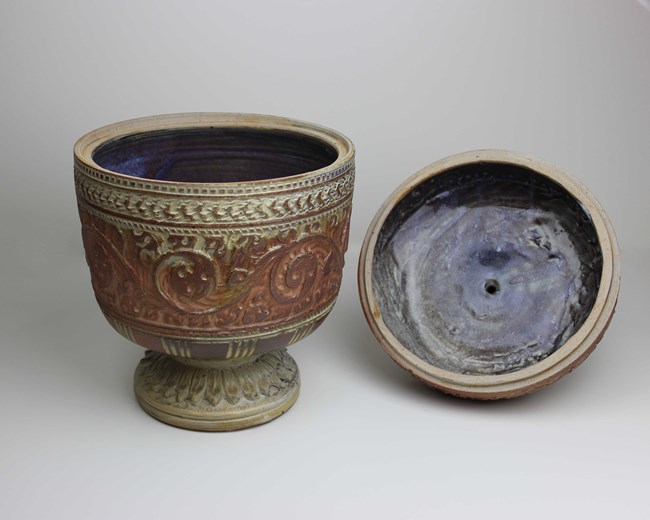
NPS Yary LivanLowell resident Yary Livan is one of perhaps only three Cambodian master ceramists to have survived the 1975 Khmer Rouge genocide and the only one known to be living in the U.S. Livan shares his artistic knowledge with the next generation through classes, apprenticeships, and demonstrations. He built and operates a traditional wood-fired kiln in the park, as part of a partnership between the park and Middlesex Community College where he is a Professor of Ceramics. In 2015, he was honored as a National Heritage Fellow, the U.S. government’s highest award in the folk and traditional arts, by the National Endowment for the Arts.
|
Last updated: August 16, 2019

